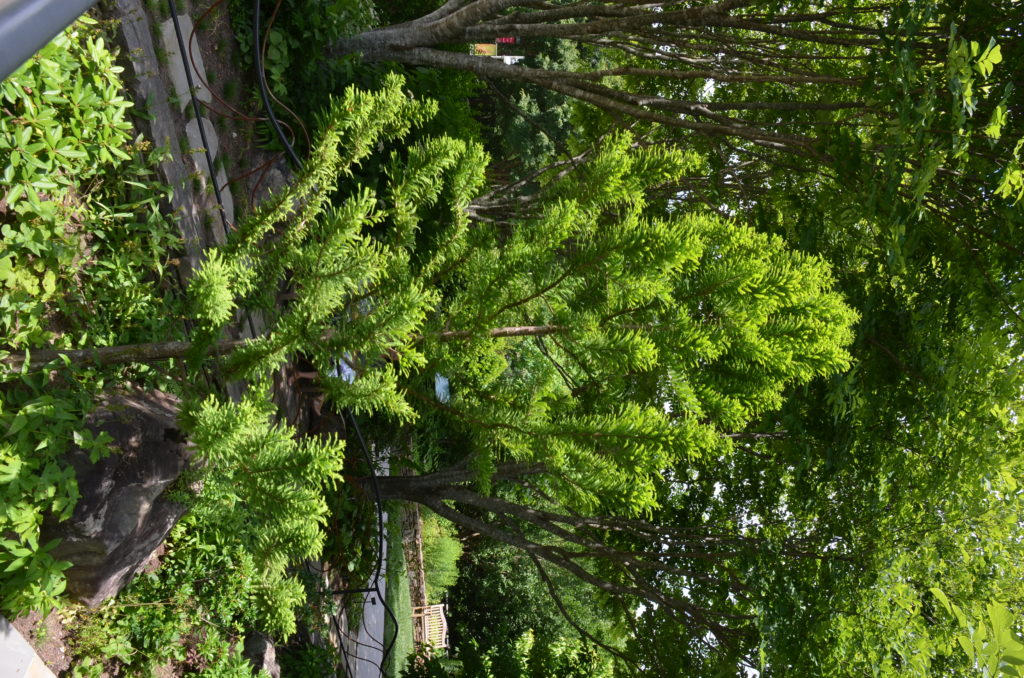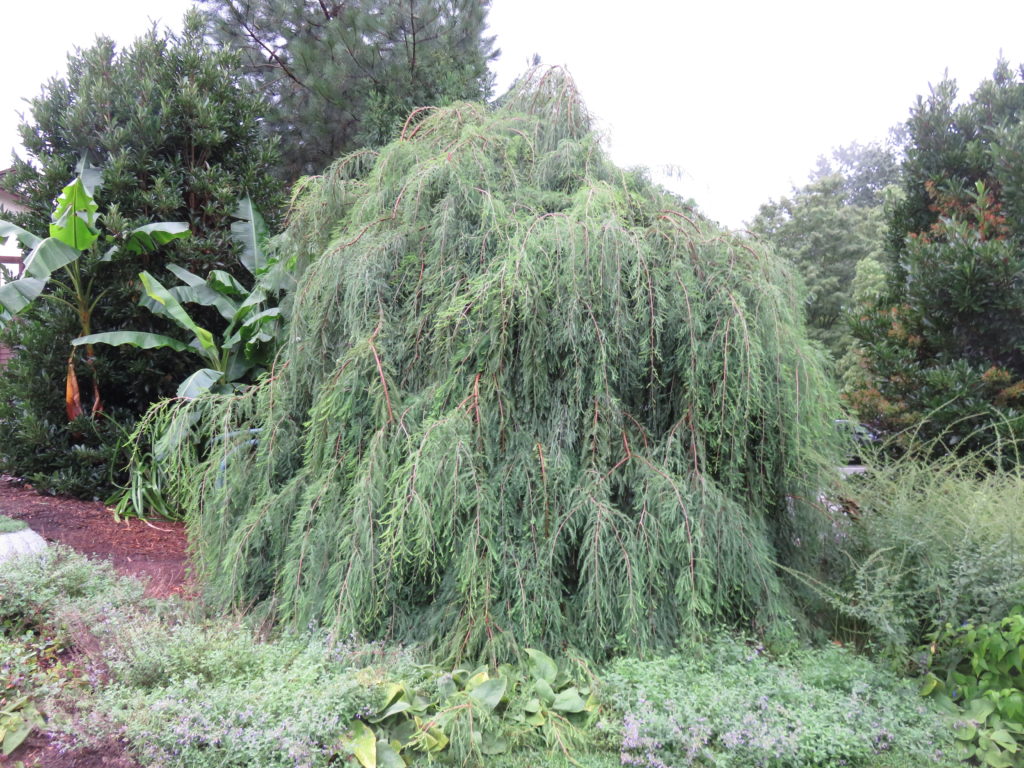
Bald Cypress (Taxodium distichum) is well-known as a deciduous conifer native to the southeastern U.S. (USDA hardiness zones 5-9). Pyramidal in form, bald cypress towers over 70 feet tall with a spread up to 50 feet.
Bald cypress is naturally found in southeast U.S. swamps, marshlands, lakes, ponds, and other wetlands. On marshy ground, you may spot their basal “knees” or mounds growing around the tree base. Knees are woody growths that project several inches to a foot above the ground, and are thought to function as aerial roots.
Soft, needle-like feathery leaves emerge in spring. Bald cypress sheds its leaves in autumn, hence its common name, bald cypress. In fall this foliage turns a gorgeous bronze tint in mid-October and early November. The leaves slowly fall from the tree over several weeks, depositing several inches of soft leaf mulch around the tree. Adult trees exhibit a herringbone branching silhouette in the winter landscape. Its exfoliating reddish-brown bark is an added plus.
Bald cypress thrives in full sun and prefers moist, acidic, sandy loam soils. However, but tolerates a wide range of soil conditions ranging from average moist soils and in standing water.

No serious insects or diseases trouble bald cypress. Chlorosis (leaf yellowing) frequently occurs in alkaline soils. Twig blights, bagworms, and various mites are occasional problems.
Varieties for smaller landscapes: ‘Shawnee Brave™ – narrowly pyramidal tree form, 50 feet high and 20 feet wide. ‘Peve Minaret’ – a dwarf tree form growing 10-15 feet high and 6 to 10 feet wide. ‘Cascade Falls’ – a weeping form that must be staked to desired height (8 to 20 feet high). ‘Falling Waters’ – grows 20 feet tall and 15 feet wide with graceful arching form.
The water-resilient wood of this tree is used in the manufacture of landscape timbers, outdoor garden furniture, flooring, shingles, flower boxes, and landscape mulch.

 Posted in
Posted in 
